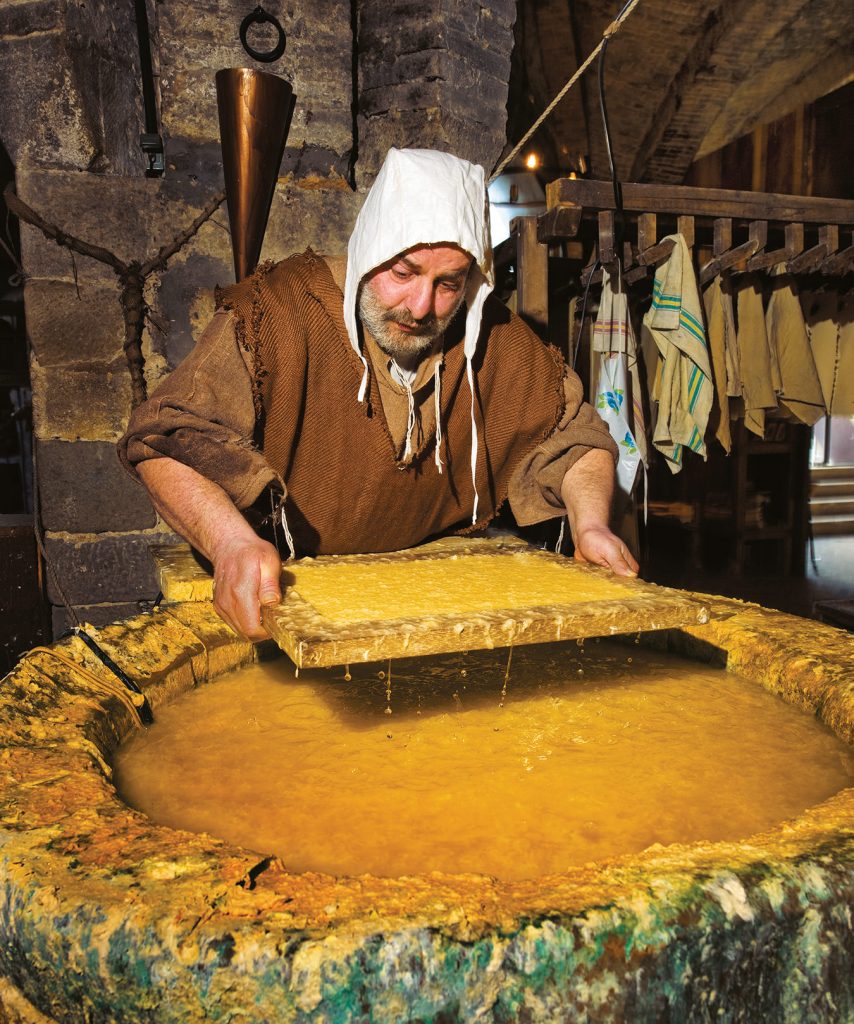Once upon a time products were made a mano. What was defined centuries ago as one’s livelihood is today revered as artisanal. And in some cases, as is unequivocally so with Francesco Proietti, doing things the old-fashioned way is all about passion.
Proietti is a mastro cartano, or master papermaker, in Bevagna, Italy, a town in the central province of Umbria. Tall and stout, with calloused fingers to match, Proietti dresses in brown medieval garb. For 18 years, this Bevagna native has been making paper by hand.
“I did my apprenticeship in Fabriano,” Proietti says, referring to the neighbouring city, celebrated for producing high-quality paper according to ancient ways and tradition. “I brought back the art of carta bambagina, a Chinese technique that arrived in my country around the 12th century.” Proietti’s technique for making paper from rags was passed from China to the Arab world, eventually finding its way to Italy through the country’s ports. Today, Proietti’s workshop, called La Valchiera, is the only authentically restored paper mill in Italy.
Handling each sheet like a precious leaf of gold, Proietti explains how paper was made from animal skins (parchment) until it was discovered that using scraps of fabric, typically linen or hemp, was a cheaper alternative. Transferring a pile of rags from the floor into a battered wooden tub, he describes his process. “I weaken the material with quicklime and water. The chemical reaction breaks down the fabric into pulp; it also acts as a bleach.” Central to this living museum is the waterwheel, which facilitates the “pulp pounder” machine. Much like the inner workings of a piano that rise and fall when notes are played, large squared logs hammer away, energized by falling water. The sound is music to Proietti’s ears. “I am like a piano tuner—and this is my instrument.”
Eventually the pulp is removed and stirred, then poured into wire moulds and drained. Each delicate piece is sandwiched between layers of canvas and stacked in a tall heap, and then sent off to a pressing contraption that looks not unlike a small torture device. Afterward it is dipped in boiled animal glue (a waterproofing coat that prevents ink from running) before being hung to dry. Proietti knows the paper is ready when it “sings”, as he demonstrates with a happy flap in the air. Finally, a rounded stone “polishes” the paper until it is flat and smooth.
Proietti is a one-man show. With no children or assistants, Proietti worries that crafts such as his are a dying breed. Wrought with similar concerns, the town of Bevagna has developed a summer festival showcasing Il Mercato delle Gaite (the Market of the Gaite), where one finds Proietti’s workshop among other medieval trades, such as silk, candle and bell making. During the last week of June, all aspects of life, including music, theatre and gastronomy, travel back in time to the 13th and 14th centuries. But Proietti’s work resumes well after the lights have been switched back on. In a small corner of his atelier, paper is displayed like trophies in elegant boxes or bound into fine leather books. While he can’t pinpoint when his paper infatuation began, he admits he’s always behind when it comes to technology. Last year Proietti bought his first mobile phone. In explaining why he resisted so long, he reasoned, “There are still so many pigeons in town.”









